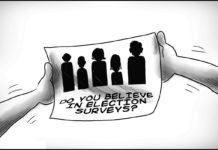
[av_one_full first min_height=” vertical_alignment=” space=” custom_margin=” margin=’0px’ padding=’0px’ border=” border_color=” radius=’0px’ background_color=” src=” background_position=’top left’ background_repeat=’no-repeat’ animation=”]
[av_heading heading=’EDITORIAL | Going beyond planting’ tag=’h3′ style=’blockquote modern-quote’ size=” subheading_active=’subheading_below’ subheading_size=’15’ padding=’10’ color=” custom_font=”][/av_heading]
[av_textblock size=” font_color=” color=”]
Friday, June 23, 2017
[/av_textblock]
[av_textblock size=” font_color=” color=”]
THIS JUNE 25, a Sunday, is Arbor Day in the Philippines. This has been institutionalized throughout the nation by planting trees and ornamental plants and other forms of relevant activities.
The necessity to promote a healthier ecosystem through the rehabilitation and re-greening of the environment is stressed in Proclamation No. 643 that amended Proclamation No. 396, s. 2003. Proclamation No. 396 enjoins the “active participation of all government agencies, including government-owned and controlled corporations, private sector, schools, civil society groups and the citizenry in tree planting activity.”
But here’s the thing: tree planting is not just about planting the seedlings; we should ensure that they survive. We should also prevent cutting especially in protected areas. Yes, we all need to look at tree planting as serious business.
Citizens are encouraged to not just plant trees but also care for them. Schools should teach the importance of trees and integrate tree-planting activities into the curriculum to promote environmental consciousness among the youth.
The need to plant the right species in the area where it can grow and thrive must also be emphasized. We need trees not just for production but also as a way to mitigate climate change, to offset the carbon we emit on a daily basis. According to the Department of Environment and Natural Resources, a single tree can sequester 0.56 metric tons of carbon dioxide in its lifetime, and around 10 trees are needed to capture the emissions of just one car.
Trees are also vital in disaster risk reduction. For instance, mangroves are the best buffer against storm surges. We saw this during the onslaught of super typhoon “Yolanda” in 2013.
As the nation prepare to mark Arbor Day, we renew the call to continue awareness programs on tree planting, including educating the public on the proper and most effective way of doing it.
[/av_textblock]
[/av_one_full]



